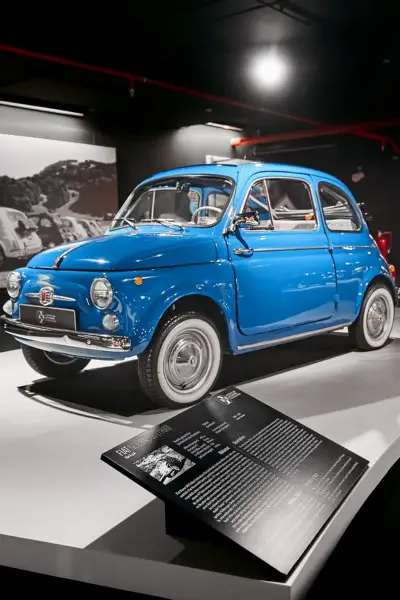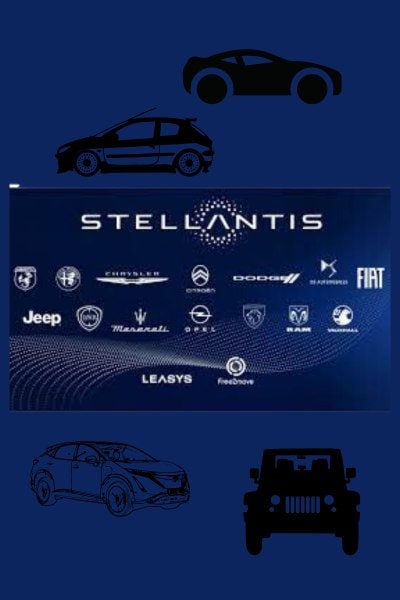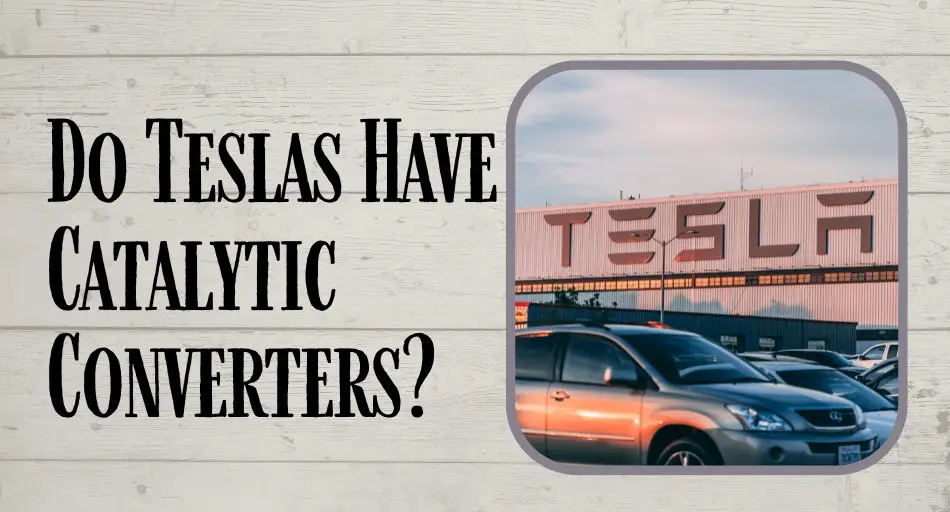Fiat is a well-known automotive brand that has been around for over a century. It was founded in Italy in 1899 and has since grown to become the largest automobile manufacturer in Europe.
However, the question of whether Fiat is still an Italian car company remains a topic of debate.
Fiat Automobiles S.p.A. is still an Italian company, even after the merger with Chrysler to form FCA. Fiat stands for “Fabbrica Italiana Automobili Torino,” which translates to “Italian Automobile Factory of Turin.”
However, some argue that the merger has diluted the Italian identity of the brand.
Despite this, Fiat remains a major player in the automotive industry, with a range of popular models such as the Fiat 500 and the Fiat Panda.
To fully understand whether Fiat is still an Italian car company, it’s important to look at the history of the brand and its current ownership structure.
By examining these factors, we can gain a better understanding of the role that Italy plays in the production and distribution of Fiat vehicles.
History of Fiat

Fiat, or Fabbrica Italiana Automobili Torino, is an Italian automotive company that has been around for over a century.
Founded in 1899, the company began as a small factory in Turin, Italy, with a workforce of just 150 people.
In its first year, Fiat manufactured 24 cars, including the 3 ½ CV, and began to establish itself as a major player in the automotive industry.
In the years that followed, Fiat expanded its operations and became a symbol of Italy’s technological and creative enterprise.
The company played a significant role in Italy’s industrialization, producing cars, trucks, tractors, and even railway engines.
Fiat’s success continued through the 1920s and 1930s, and the company became a major employer in Italy.
During World War II, Fiat was forced to switch its production to military vehicles and weapons.
After the war, the company faced significant challenges, including a shortage of raw materials and a struggling Italian economy.
However, Fiat managed to bounce back and played a crucial role in Italy’s post-war reconstruction.
In the 1950s, Fiat introduced the Topolino, a small car that became one of the company’s most successful models.
The Topolino was designed to be affordable and practical, and it quickly became popular with Italian families.
The car’s success helped Fiat to establish itself as a leader in the automotive industry.
In the 1970s and 1980s, Fiat faced a major crisis as the global automotive industry struggled with overproduction and declining demand.
The company was forced to restructure its operations and cut costs, and it eventually sold off some of its subsidiaries, including Ferrari and Maserati.
Despite these challenges, Fiat has remained a major player in the automotive industry and a symbol of Italian engineering and innovation.
Today, the company is a subsidiary of Stellantis, a multinational automotive manufacturer, and continues to produce cars and trucks that are popular with drivers around the world.
Fiat Today
Today, the company is part of the larger conglomerate known as Stellantis, which was formed in 2021 after a merger with French automaker PSA Group.
Fiat Chrysler Automobiles
Prior to the merger, Fiat was part of Fiat Chrysler Automobiles (FCA), a multinational corporation that was formed in 2014 after a merger between Fiat and the American automaker Chrysler.
FCA was headquartered in Turin, Italy, and had operations in over 40 countries.
Under FCA, Fiat continued to produce a wide range of vehicles, including the popular Fiat 500 and the Fiat Panda.
The company also owned other brands such as Alfa Romeo, Maserati, and Jeep.
Stellantis

In 2021, FCA merged with PSA Group to form Stellantis, a multinational corporation that is now one of the largest automobile manufacturers in the world.
Stellantis is headquartered in Amsterdam, Netherlands, and has operations in over 30 countries.
As part of Stellantis, Fiat continues to produce vehicles that are sold around the world. The company’s focus has shifted towards electric and hybrid vehicles, with models such as the Fiat 500e and the Fiat Panda Hybrid.
Leadership
Throughout its history, Fiat has been led by several influential figures. One of the most notable was Giovanni Agnelli, who served as the company’s chairman from 1966 to 1996.
Agnelli was responsible for transforming Fiat into a global automobile manufacturer and was known for his innovative approach to business.
In more recent times, Sergio Marchionne served as the CEO of both Fiat and Chrysler from 2009 until his death in 2018.
Marchionne was credited with turning around both companies and was known for his aggressive approach to business.
Today, John Elkann serves as the chairman of Stellantis and is a member of the Agnelli family, which has been involved with Fiat since its inception.
Manufacturing
Fiat’s historic Lingotto factory in Turin, Italy, is a symbol of the company’s manufacturing legacy.
The factory was built in 1923 and was one of the largest automobile factories in the world at the time.
Today, Fiat has manufacturing facilities around the world, including in Italy, Poland, Brazil, and Mexico.
The company also has partnerships with other manufacturers, such as Ferrari, to produce engines and other components.
Overall, Fiat remains an important player in the global automobile industry, with a rich history and a strong focus on innovation and sustainability.
Fiat in the Automotive Industry
Fiat’s Impact on the Industry
Fiat has been a major player in the automotive industry for over a century. The company has contributed significantly to the development of the industry, particularly in Europe.
Fiat has been known for its innovative designs, such as the Fiat 500, which has been a popular model since its introduction in 1957.
The Fiat brand has also been associated with high-performance vehicles, such as the Fiat Abarth.
Fiat’s Technology and Reliability
Fiat has been at the forefront of automotive technology, particularly in the area of electric vehicles.
The company has invested heavily in developing electric vehicles and has been successful in launching several models.
Fiat has also been known for its reliability, with many of its models receiving high ratings from Consumer Reports.
Fiat’s Sales and Market Share
Fiat has been one of the largest automobile manufacturers in Europe for many years.
The company has a strong presence in the European market and has been expanding its operations in other parts of the world as well.
Despite facing stiff competition from other major players in the industry, Fiat has been able to maintain a significant market share.
Fiat has been able to maintain its position in the industry by offering a range of models at different price points.
The company has also been successful in achieving high-volume sales, particularly in the European market.
Fiat has been refreshing its models regularly, which has helped to keep the brand relevant and attractive to consumers.
Overall, Fiat has been a major player in the automotive industry for many years.
The company has made significant contributions to the development of the industry, particularly in Europe.
Fiat has been successful in developing innovative designs, investing in technology, and achieving high sales volume.
Fiat’s Relationship with Italy
Fiat is an Italian automobile manufacturer that has played a significant role in Italy’s economy and culture.
This section will explore the company’s relationship with Italy, including its role in the country’s economy and its relationship with Italian culture.
Fiat’s Role in Italy’s Economy
Fiat is one of Italy’s largest companies and has been a major player in the country’s economy for over a century.
The company was founded in Turin, Italy in 1899 and has since become one of the most recognizable brands in the country.
Fiat has been a major employer in Italy, with thousands of people working for the company throughout the country.
Fiat’s impact on the Italian economy has been significant. The company has been responsible for creating jobs and generating revenue for the country.
In addition, Fiat has been a major exporter of Italian goods, with its cars being sold in markets around the world.
Fiat’s Relationship with Italian Culture
Fiat has also had a significant impact on Italian culture. The company has been a part of Italian life for over a century and has become a symbol of Italian design and engineering.
Fiat’s cars have been featured in Italian films and television shows, and the company has been a sponsor of Italian sports teams.
Fiat has also been involved in Italian culture through its Fiat Professional division, which produces commercial vehicles for a variety of industries.
These vehicles are used by Italian businesses and organizations, further cementing Fiat’s place in Italian culture.
Overall, Fiat’s relationship with Italy has been a long and fruitful one. The company has played a significant role in Italy’s economy and culture, and its impact on the country is likely to continue for years to come.
Fiat’s Expansion and Partnerships
Fiat is an Italian car company that has expanded its operations globally by partnering with other brands.
Fiat’s expansion and partnerships have helped the company to grow and compete in the global automobile industry.
Fiat’s Expansion into the U.S.
Fiat entered the U.S. market in 2011 by acquiring a 20% stake in Chrysler. The partnership allowed Fiat to access the U.S. market and expand its product portfolio.
The partnership also enabled Chrysler to access Fiat’s technology and expertise in small cars and fuel-efficient engines.
Fiat has also expanded its operations in the U.S. by introducing its brands, such as Abarth, Alfa Romeo, and Maserati.
The company has also launched new models, such as the Fiat 500 and the Jeep Renegade, to cater to the U.S. market’s demand for small cars and SUVs.
Fiat’s Partnerships with Other Brands
Fiat has formed partnerships with other brands to expand its operations and product portfolio. In 2014, Fiat merged with Chrysler to form Fiat Chrysler Automobiles (FCA).
The merger allowed the two companies to share technology, platforms, and distribution networks.
The merger also enabled FCA to expand its product portfolio by introducing new models, such as the Dodge Charger and Jeep Grand Cherokee.
Fiat has also formed partnerships with other brands, such as Mazda and Peugeot.
In 2019, Fiat signed a deal with Peugeot to create a new company, Stellantis, which is now the world’s fourth-largest automaker.
The partnership allowed the two companies to share technology and expertise in electric and autonomous vehicles.
Fiat has also formed partnerships with other brands to expand its product portfolio. In 2017, Fiat formed a joint venture with Tata Motors to produce the Tata Nano, a small car designed for the Indian market.
The partnership allowed Fiat to access the Indian market and expand its product portfolio.
In conclusion, Fiat’s expansion and partnerships have helped the company to grow and compete in the global automobile industry.
The company has expanded its operations in the U.S. by acquiring Chrysler and introducing new models.
Fiat has also formed partnerships with other brands to expand its product portfolio and share technology and expertise.

Jack is the owner, chief editor, and senior writer of this website.
Machinery, engines, and farming have always been a passion of his since he was a young boy. Growing up on a small farm in rural America, he learned the value of hard work and dedication from an early age.
After completing his degree in Engineering, he decided to follow his dream and became a farmer in 2009.
Since then, he has gained a wealth of knowledge and experience in the field. He has grown a variety of crops, tended to farm animals, and worked with all sorts of farming machinery. Continue reading…





